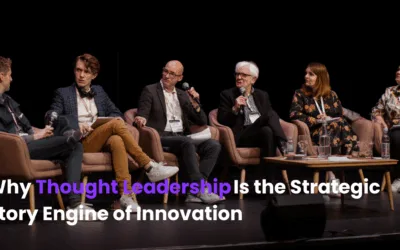The world is in love with innovation. It’s good for business, and it’s good for the economy. Innovation in business, in particular, is providing organisations with an opportunity to respond to significant change in consumer behaviour, to gather insights from data collection, and to forge new competitive advantages. It makes sense for business and governments to embrace innovation.
But while all the movement to facilitate innovation is laudable, we need to be careful that we don’t assume that all programs calling themselves ‘innovation’ are necessarily valuable, or indeed, innovative. All this innovation enthusiasm has facilitated a veritable explosion of hackathons, idea jams and business pitching competitions, generating ideas based on a few broad themes, but few really practical solutions to business and social problems. While it could be argued that the rapid prototyping of hackathons is inherently experimental, and that successful change comes from trying lots of things out, there are some basic assumptions about the outputs of these events that need to be challenged.
The primary goal of the majority of solutions generated at these events is change, and the rationale appears to be that we have the technology, or that we have access to some data.
The theory seems to be that any change is innovation. It categorically isn’t.
Change can have either a positive or a negative effect on a system, and it can involve either newly invented processes or tools, or it can just be a reorganisation of current business activities. Only where new processes and tools are involved can it be in the ballpark of ‘innovation’, and really only where it has a positive impact on an organisation is it truly innovative. So only a very small subset of change can ever be considered innovation.
From a business perspective, all change is expensive and risky. And where change has a cumulatively negative impact on productivity, resource use, and so on, it is a drain on both the market performance and competitive positioning of an organisation. Even where new tools or processes are deployed, if the cost or practicality of implementation of any new solution is greater than the benefits to be derived from it, then it is just change, and probably for the worse of all involved. It’s change for the sake of change, rather than change for the better.
While intense collaboration and rapid prototyping from hackathons, idea storms and design jams (we call these ‘distributed R&D’ events) can produce extraordinary ideas and products, it does not necessarily follow that all solutions that arise from these exercises actually address anything that really needs solving. It also doesn’t necessarily follow that those intended to benefit from a solution will actually benefit once the solution is properly integrated. If a distributed R&D event is prepared too hastily, the chances of generating solutions to problems that really need to be solved is limited to luck. And without significant investment in incubation of such solutions, ideas either go nowhere, or they over-complicate existing systems.
Where businesses are considering how to embrace innovation either internally or with partners and stakeholders, it is imperative to select methods for fostering its development carefully. The probability of successful innovation incubation is directly proportional to the ground work that goes in to preparing an innovation process. Most importantly, it’s vital not to confuse ‘change’ with ‘innovation’. Change is gonna come. But it will only be innovative change when it is strategic.



